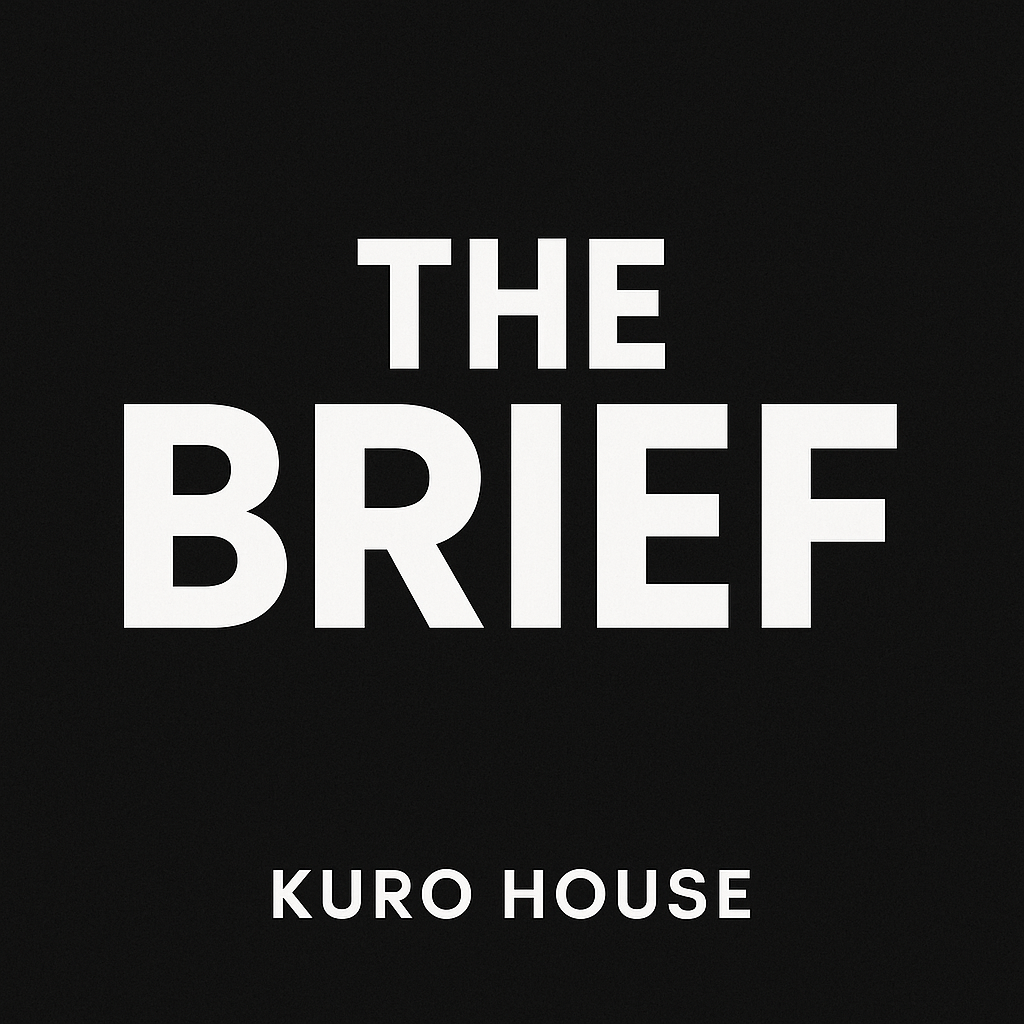Listen To The Show
Transcript
Welcome back to The Brief by Kuro House, where we dive deep into the stories shaping the future of marketing and media. Today, we’re seeing seismic shifts—AI is upending creative work, legacy media is betting big on new talent, and even in-flight TV is getting a digital-age makeover. Let’s get into the five stories that every marketer needs to understand right now.
First up, the media world is buzzing about Paramount’s $150 million acquisition of The Free Press, a digital news startup generating just $20 million in revenue. According to Adweek, this is a deal that breaks all the usual rules: instead of the typical five to fifteen times EBITDA, Paramount is paying at least 7.5 times revenue—and when you factor in the rising value of Paramount’s stock, the multiple could be even higher. Why the splurge? It’s not about current profits, but about potential. The Free Press, founded by Bari Weiss, brings in high-quality recurring subscription revenue and a loyal, untapped audience. Paramount’s play is twofold: first, they’re betting that with their resources, The Free Press can scale into a major direct-to-consumer news brand. Second, this is a high-profile “acqui-hire”—they want Weiss herself, her contributors, and her editorial vision. Weiss will now lead CBS News, signaling a major cultural reset at the network. This move is part of a broader strategy: after settling a lawsuit with Donald Trump and canceling The Late Show with Stephen Colbert, Paramount is repositioning itself from a liberal stronghold to a centrist powerhouse, aiming to capture audiences and advertisers that feel underserved. Analysts are split—some see it as validation for creator-led media, while others think it’s a one-off. But everyone agrees: if Paramount can integrate a three-year-old startup into a 90-year-old newsroom, it could become the blueprint for legacy media’s digital reinvention.
Meanwhile, at the WebexOne 2025 event in San Diego, Cisco unveiled its Connected Intelligence framework—a vision for workplace collaboration where AI agents become true digital teammates. As reported by Digiday, Cisco is introducing specialized AI agents into Webex that can automate routine tasks, manage workflows, and even communicate with each other. Picture this: a Task Agent that automatically generates action items from meeting transcripts, a Notetaker Agent that captures real-time summaries of spontaneous in-person meetings, and a Polling Agent that recommends live polls to boost engagement. There’s even an AI Receptionist for Webex Calling, handling inquiries and scheduling appointments so staff can focus on their core work. Cisco’s early partnership with Nvidia means their devices now run on processors 7,000 times more powerful than before, enabling features like a Director Agent that autonomously adjusts camera views and a Workspace Advisor Agent that creates 3D digital twins of meeting spaces. Crucially, Cisco is taking an open ecosystem approach, integrating with Microsoft 365 Copilot, Salesforce, Jira, and Amazon Q—so users can search across platforms and perform tasks without leaving Webex. With 85% of Cisco customers using multiple meeting platforms, interoperability is key. The future Cisco envisions isn’t just people collaborating with people, but people working with AI—and AI agents working with each other. Early adoption metrics are strong: meeting summarization and action-item generation usage has increased fivefold in just three months. Most features will be generally available between late 2025 and early 2026, promising to fundamentally reshape how work gets done.
Speaking of AI, marketers are watching nervously as Meta’s Vibes feed and OpenAI’s Sora app usher in the era of the “synthetic scroll”—feeds filled with machine-made, perfectly personalized video content. Digiday’s analysis captures the mood: marketers are curious but cautious, worried that this explosion of AI-generated content could accelerate a race to the bottom. As production costs collapse, the fear is that “content” will become an endless stream of lookalike videos, prioritizing engagement over meaning and trust. Craig Elimeliah, chief creative officer at Code and Theory, sums up the anxiety: How do we protect taste? How do we avoid drowning in sameness? There’s also the risk of misinformation and brand safety—already, Sora users have generated everything from Tupac to Pikachu, with no oversight. The old frameworks for social media marketing—reach, engagement, distribution—are starting to feel obsolete as the line between brand, creator, and user content blurs into a generative ecosystem. Marketers are beginning to see AI video as more than a creative tool; it’s the engine of a new, continuously optimizing marketing system. The consensus? Brands still matter—maybe even more than before. As Wayne Deakin notes, “AI won’t replace brands. It will reveal them.” The challenge now is to make sure your brand’s distinctive assets show up in this new landscape, because the old playbooks just won’t cut it.
From the airwaves to the skies: live TV advertising is taking off—literally. In a sponsored piece for Digiday, DIRECTV Advertising’s Matt Cerussi explains how in-flight entertainment is evolving. With 65% of Americans planning to travel between Thanksgiving and New Year’s, and 60% of them flying, airlines are upgrading to IPTV—streaming live content over onboard Wi-Fi. Gone are the days of a handful of static channels; now, passengers expect the same live sports, news, and events they get at home. For advertisers, this means a captive, distraction-free audience, with ads delivered directly to seatback screens or personal devices, complete with sound. The buying process has been streamlined, too—brands can now get their ads in the air within days, not months, thanks to consolidated planning across airlines. Dynamic ad insertion allows for highly targeted campaigns, surrounding tentpole events like the Super Bowl or FIFA World Cup with relevant messaging for travelers flying to and from host cities. The message is clear: TV advertising is no longer just about the destination—it’s about meeting audiences wherever they are, including 35,000 feet above ground.
Finally, Edelman is making big moves to capitalize on the AI revolution in PR and marketing. As reported by Adweek, the independent PR giant has announced a leadership shakeup: Matthew Harrington becomes executive chair, Mainardo de Nardis (former OMD Worldwide CEO) steps in as global president and COO, and Brian Buchwald, previously global chair of product and AI, is now president of global transformation and performance. The goal? To compete more directly for marketing budgets and drive innovation. Edelman has also unveiled its Central Operating System (ECOS), an AI-powered platform that connects in-house generative models with external tools like OpenAI and Microsoft, as well as enterprise software such as Workday. ECOS acts as a “collaboration layer,” with AI agents managing workflows, generating campaigns, and coordinating deliverables—essentially, operational copilots that speed up work across the agency. Alongside ECOS, Edelman is developing Archie, a proprietary large language model focused on brand trust. With these tools, Edelman aims to identify cultural moments before they peak, attribute business value to earned media, and prove ROI—positioning earned media as a core part of marketing strategies. CEO Richard Edelman sees this as a moment of opportunity, aiming to increase the firm’s share of marketing spend from 7% to 15%.
That’s it for today’s edition of The Brief. From AI-powered workspaces and synthetic social feeds to the reinvention of legacy media and in-flight advertising, the landscape is shifting fast. The throughline? Whether you’re building brands, buying media, or creating content, adaptability and strategic vision have never been more important. Thanks for listening—stay sharp, and we’ll see you tomorrow.


